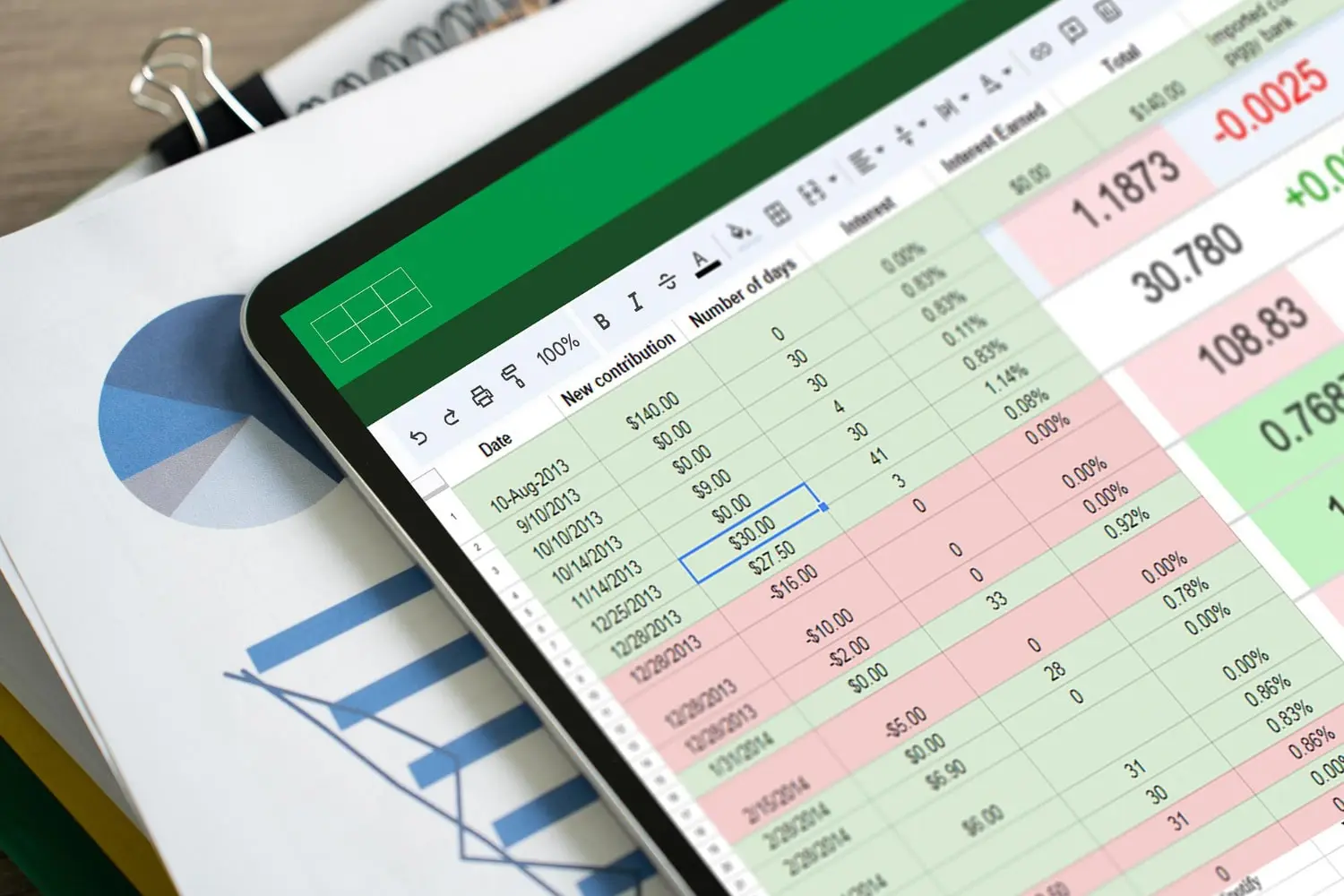Is Accounts Receivable an Asset: Detailed Analysis
Feb 29, 2024

Classifying accounts receivable as an asset remains a subject of considerable debate and scrutiny. While conventional accounting practices often categorise accounts receivable as assets due to their potential to generate future cash flows, some professionals argue that their inherent uncertainties and risks warrant a more cautious assessment.
In this article, we explored the complexities surrounding classifying accounts receivable and its broader implications in financial management.
Is Accounts Receivable Considered an Asset?
Traditionally, assets are resources with economic value that a company owns or controls and are expected to provide future benefits. In this sense, accounts receivable can be considered assets because they represent potential future cash inflows.
However, some argue that accounts receivable lack the characteristics of typical assets due to their uncertain nature, as there is a risk of non-payment or delayed payment. Despite this debate, accounting standards generally classify accounts receivable as current assets on the balance sheet, reflecting their importance in assessing a company's liquidity and financial health.
Improve Your Accounts Receivable Management With OAR
Is Accounts Receivable an Asset or Liability?
Determining whether accounts receivable constitutes an asset or liability depends on the perspective from which it is viewed in the context of financial analysis. Accounts receivable can be considered an asset due to its potential to generate future cash inflows for the business. It represents the amounts owed to the company by its customers or clients for goods or services provided on credit terms. As such, it contributes to the company's overall value and is typically reported as a current asset on the balance sheet.
However, from another angle, accounts receivable can be perceived as a liability because it represents an obligation for the company to collect payments from its debtors within a specified timeframe. Failure to do so could result in financial strain or liquidity issues for the business, thus posing a potential risk. Ultimately, classifying accounts receivable as an asset or liability hinges on its role in the company's financial position and its impact on cash flow management.
Is Accounts Receivable an Asset or Revenue?
The classification of accounts receivable as either an asset or revenue hinges on its nature within the financial framework of a business. While accounts receivable represents money owed by customers for goods or services provided, its treatment varies depending on the context.
As an asset, accounts receivable reflects the potential future cash inflows for the business, contributing to its overall value and liquidity. However, it can also be perceived as revenue when considering the impact on the income statement, as it represents sales that have been made but not yet collected.
Therefore, the distinction lies in the timing and perspective of the analysis: as an asset, it signifies the company's financial health and ability to generate cash, whereas as revenue, it signifies the company's performance in generating sales within a specific period.
Types of Assets Involved in Accounts Receivable
Understanding the types of assets involved in accounts receivable provides a more nuanced perspective on the intricate dynamics of a business's financial health. Beyond the straightforward definition of accounts receivable, various classifications and categories of assets intertwine to shape the overall picture. Each plays a crucial role in the accounts receivable process, from tangible assets like inventory and equipment to intangible assets such as intellectual property and goodwill.
Exploring these different asset types sheds light on the factors influencing a company's liquidity, profitability, and long-term viability. As businesses navigate the complexities of managing accounts receivable, a comprehensive understanding of the underlying assets is indispensable for informed decision-making and strategic planning.
Trade Receivable
Trade receivable, as a subset of accounts receivable, represents amounts owed to a company by its customers for goods or services provided on credit terms. These receivables are considered assets on the balance sheet due to their potential to generate future cash inflows. They are integral to the working capital management of a business, reflecting the ongoing revenue stream and the efficiency of its credit policies.
Efficient trade receivable management involves balancing the need to extend credit to customers with the imperative to ensure timely collection, thus maximising liquidity and minimising the risk of bad debts.
Non-Trade Receivable
Non-trade receivable, within accounts receivable, encompasses a diverse array of assets beyond the typical sales transactions. These receivables originate from sources other than the sale of goods or services, including employee loans, tax refunds, or insurance claims.
While trade receivables predominantly involve customer transactions, non-trade receivables extend to various financial relationships and obligations. Managing non-trade receivables effectively requires a nuanced approach, considering factors such as creditworthiness, repayment terms, and legal considerations distinct from trade receivables.
Recognising non-trade receivables as a subset of assets in accounts receivable underscores the comprehensive nature of financial management, encompassing diverse revenue streams and financial obligations.
Advances to Suppliers
Advances to suppliers is a unique category within accounts receivable, showing a financial transaction where a company provides funds upfront to its suppliers before receiving goods or services. Despite the term "receivable," advances to suppliers are indeed assets, representing a claim to future economic benefits for the business.
These advances are typically recorded as current assets on the balance sheet, reflecting the expectation of receiving goods or services in return. While they resemble traditional accounts receivable in some aspects, advances to suppliers carry distinct characteristics, often serving as strategic investments to foster stronger relationships with key suppliers or secure preferential terms in future transactions.
Loans Receivable
Unlike traditional accounts receivable, which primarily comprise amounts owed for goods or services provided on credit, loans receivable encompass funds lent out by the business to external parties. These loans typically involve a formal agreement outlining repayment terms, interest rates, and other relevant conditions.
Loans receivable are considered assets on the balance sheet, reflecting the future cash inflows expected from the repayment of the principal amount and any accrued interest. Proper management and monitoring of loans receivable are essential to ensure timely repayment and mitigate the risk of default, thereby safeguarding the financial health and stability of the business.
Notes Receivable
Notes receivable are formal written promises of payment, often supported by legal documentation such as promissory notes. They typically involve specific terms and conditions, including repayment schedules and interest rates, making them more structured than typical trade credit transactions.
Notes receivable offer businesses a means to extend credit to customers or other entities while formalising repayment terms. Consequently, they are recognised as valuable assets on the balance sheet, contributing to a company's overall financial health and liquidity position.
Contact OAR to Manage Your Accounts Receivable
Conclusion
In conclusion, the debate over whether accounts receivable should be classified as an asset remains multifaceted. While traditional definitions of assets encompass resources expected to provide future economic benefits, the uncertain nature of accounts receivable's collection presents challenges. However, accounting standards generally classify them as current assets, acknowledging their potential to contribute to future cash inflows and their significance in assessing a company's liquidity and financial health.
Whether viewed as assets, liabilities, or revenue, understanding the intricate dynamics of accounts receivable, including its classification, types, and management, is crucial for informed decision-making and strategic planning in financial management. As businesses navigate the complexities of accounts receivable, comprehensive knowledge of its role within the broader spectrum of assets is indispensable for maximising liquidity, profitability, and long-term viability.
 Author: Giles Goodman, Commercial Intervention Officer OAR
Author: Giles Goodman, Commercial Intervention Officer OAR
Giles Goodman is the definitive expert in cross-border commercial debt collection, mediation, legal recovery, and accounts receivable. Based in London, his 25 years of experience provide a global perspective on preventing defaults and efficiently managing overdue accounts. Giles’s insights and analyses empower business owners worldwide with strategic approaches to financial management and recovery.

Take control of your cash flow.
Streamline Vendor Onboarding & Boost Payments Worldwide.
Contact Us


OAR, Your global AR partner.
Head Office
Number One
Vicarage Lane
Stratford
London, E15 4HF
info@outsource.ar
Phone
+44 2083 460563
OAR | Copyright 2024
